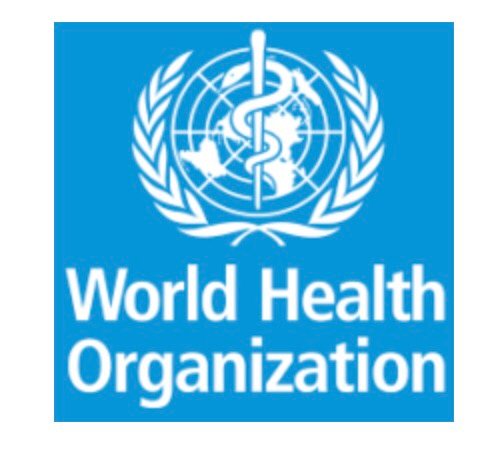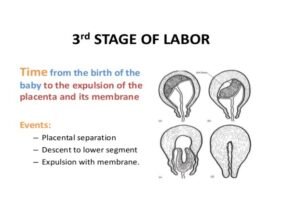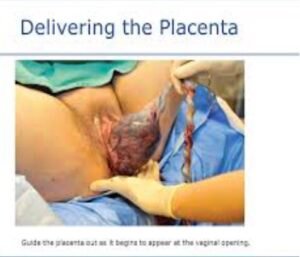Contract Duration (Years, Months, Days): 1
Job Posting
Jun 8, 2024, 7:34:16 AM
Closing Date
Jun 29, 2024, 10:59:00 PM
Primary Location
Nigeria-Abuja
Organization
World Health Organization and Other Entities
Schedule
Full-time
IMPORTANT NOTICE:
Please note that the deadline for receipt of applications indicated above reflects your personal device’s system settings.
OBJECTIVES OF THE PROGRAMME:
The incumbent will enhance national capacity in overall disease prevention and control by collaborating on the development and implementation of national, public health Programmes and strategies on surveillance and response which may include emerging and re-emerging infectious diseases. This may also serve to strengthen early detection, verification and rapid response to epidemics and other public health events of national or international concern.
DESCRIPTION OF DUTIES
The incumbent will perform all, or part of the following, and other related responsibilities as required by the needs of the office.1.
Advance coordination with all technical focal points at regional and headquarters levels, under the guidance of the head of the WHO country office.2.
Provide authoritative advice to national public health authorities and lead the epidemiological work of the country office that under pins policy formulation.
Support relevant teams on building core capacities for surveillance, early detection, verification and rapid response to epidemics and other public health events of international concern, as required in the International Health Regulations (IHR) 2005.
Ensure that the WHO Country Office has access to all relevant existing country-specific health-related data.
This includes national and subnational datasets, such as demographics of populations affected by specific diseases (relevant age,gender, etc.) and time trends.
Analyze such data sets to provide additional insights on the country’s health context and epidemiological situation.
Serve as focalperson for all internal and external requests related to country-specific data. As needed, ensure government agreement for the use and dissemination of such data.
Assist the government and relevant institutions on the enhancement of national capacities in epidemic and disease-trends’ forecasting and detection systems, including epidemiology and laboratory surveillance for monitoring and evaluating the core surveillance and real-time analysis of outbreak intelligence data.
Lead and coordinate the development of training courses for public health professionals on epidemiological surveillance, outbreak investigation, and/or the improvement of related data management.
Oversee the WHO Office’s support to the government in conducting field investigations of public health events. when required by the specific country or health situation.
Collaborate with Health Emergency teams to promote WHO’s position and successfully influence national health authorities to develop infection prevention and control programmes in health care facilities, including (where and when required) focusing on preparedness and response to epidemics and pandemics.
Participate, as needed, in risk assessments for unusual health events.
Collaborate with relevant authorities on the development and maintenance of a national system or comprehensive data collection and trend analysis of public health events.
Play a lead role in the analysis, interpretation, and knowledge building of surveillance data (including virological data) through WHO and peer-reviewed publications and media.
Encourage collaboration and develop innovative advocacy initiatives and project proposals for joint action and resource mobilization to augment national, operational responses to public health events.
Act as the mainliais on between government and WHO (all levels) on country-specific data gathering and dissemination of WHO-generated data and data analysis.
Perform other activities as required by WHO Representative.
REQUIRED QUALIFICATIONSEducationEssential: Advanced university degree (Master’s level) in epidemiology, public health, medical or other studies in a field directly related to the position.Post-graduate training in epidemiology (EPIET) or similar programme
Desirable: Specialized training in public health would be an asset with a focus on monitoring impact of public health interventions
ExperienceEssential: A minimum of seven (7) yearsof work experience relevant to the position (in epidemiology including developing and/or implementing Programmes, policies, and guidelines as well as monitoring and evaluation of diseases and public health issues), with some of it obtained in an international context. Part of this must have been in a developing country context
Desirable: Experience in public-health responses in complex emergency and humanitarian crisis situations Experience in WHO or within the UN system with an understanding of its mandate, goals, and procedures
SkillsDemonstrated knowledge and professional skills in the development and implementation of public health surveillance systems.Seasoned expertise in the collection, analysis, and interpretation of epidemiological and event-based surveillance data. Strong ability to process, analyse and interpret epidemiological and event-based surveillance data. Expertise in providing technical support/guidance for a rapid, public-health response topublic-health events.Experience in data analysis and interpretation related to epidemics/pandemics.Knowledge of the communicable and non-communicable disease profile of the country. Demonstrated training skills (developing and conducting training).Ability to lead and coordinate multidisciplinary teams, projects, and programmes. Demonstrated skills to develop public-health guidelines
WHO CompetenciesTeamwork
Respecting and promoting individual and cultural differences
Communication
Building and promoting partnerships across the organization and beyond
Producing results
Use of Language Skills
Essential: Expert knowledge of English.
Desirable:
REMUNERATION
WHO salaries for staff in the Professional category are calculated in US dollars. The remuneration for the above position comprises an annual base salary starting at USD 77,326 (subject to mandatory deductions for pension contributions and health insurance, as applicable), a variable post adjustment, which reflects the cost of living in a particular duty station, and currently amounts to USD 3873 per month for the duty station indicated above. Other benefits include 30 days of annual leave, allowances for dependent family members, home leave, and an education grant for dependent children.
ADDITIONAL INFORMATION
- This vacancy notice may be used to fill other similar positions at the same grade level
- Only candidates under serious consideration will be contacted.
- A written test and/or an asynchronous video assessment may be used as a form of screening.
- In the event that your candidature is retained for an interview, you will be required to provide, in advance, a scanned copy of the degree(s)/diploma(s)/certificate(s) required for this position. WHO only considers higher educational qualifications obtained from an institution accredited/recognized in the World Higher Education Database (WHED), a list updated by the International Association of Universities (IAU)/United Nations Educational, Scientific and Cultural Organization (UNESCO).
- According to article 101, paragraph 3, of the Charter of the United Nations, the paramount consideration in the employment of the staff is the necessity of securing the highest standards of efficiency, competence, and integrity. Due regard will be paid to the importance of recruiting the staff on as wide a geographical basis as possible.
- Any appointment/extension of appointment is subject to WHO Staff Regulations, Staff Rules and Manual.
- Staff members in other duty stations are encouraged to apply.
- The WHO is committed to creating a diverse and inclusive environment of mutual respect. The WHO recruits and employs staff regardless of disability status, sex, gender identity, sexual orientation, language, race, marital status, religious, cultural, ethnic and socio-economic backgrounds, or any other personal characteristics.
- The WHO is committed to achieving gender parity and geographical diversity in its staff. Women, persons with disabilities, and nationals of unrepresented and underrepresented.
- Persons with disabilities can request reasonable accommodations to enable participation in the recruitment process.
- An impeccable record for integrity and professional ethical standards is essential. WHO prides itself on a workforce that adheres to the highest ethical and professional standards and that is committed to put the WHO Valuer into practice.
- WHO has zero tolerance towards sexual exploitation and abuse (SEA), sexual harassment and other types of abusive conduct (i.e., discrimination, abuse of authority and harassment). All members of the WHO workforce have a role to play in promoting a safe and respectful workplace and should report to WHO any actual or suspected cases of SEA, sexual harassment and other types of abusive conduct. To ensure that individuals with a substantiated history of SEA, sexual harassment or other types of abusive conduct are not hired by the Organization, WHO will conduct a background verification of final candidates.
- Mobility is a condition of international professional employment with WHO and an underlying premise of the international civil service. Candidates appointed to an international post with WHO are subject to mobility and may be assigned to any activity or duty station of the Organization throughout the world.
- WHO also offers wide range of benefits to staff, including parental leave and attractive flexible work arrangements to help promote a healthy work-life balance and to allow all staff members to express and develop their talents fully.
- The statutory retirement age for staff appointments is 65 years. For external applicants, only those who are expected to complete the term of appointment will normally be considered.
- Please note that WHO’s contracts are conditional on members of the workforce confirming that they are vaccinated as required by WHO before undertaking a WHO assignment, except where a medical condition does not allow such vaccination, as certified by the WHO Staff Health and Wellbeing Services (SHW). The successful candidate will be asked to provide relevant evidence related to this condition. A copy of the updated vaccination card must be shared with WHO medical service in the medical clearance process. Please note that certain countries require proof of specific vaccinations for entry or exit. For example, official proof /certification of yellow fever vaccination is required to enter many countries. Country-specific vaccine recommendations can be found on the WHO international travel and Staff Health and Wellbeing website.
- WHO also offers wide range of benefits to staff, including parental leave and attractive flexible work arrangements to help promote a healthy work-life balance and to allow all staff members to express and develop their talents fully.
- The statutory retirement age for staff appointments is 65 years. For external applicants, only those who are expected to complete the term of appointment will normally be considered.
- Please note that WHO’s contracts are conditional on members of the workforce confirming that they are vaccinated as required by WHO before undertaking a WHO assignment, except where a medical condition does not allow such vaccination, as certified by the WHO Staff Health and Wellbeing Services (SHW). The successful candidate will be asked to provide relevant evidence related to this condition. A copy of the updated vaccination card must be shared with WHO medical service in the medical clearance process. Please note that certain countries require proof of specific vaccinations for entry or exit. For example, official proof /certification of yellow fever vaccination is required to enter many countries. Country-specific vaccine recommendations can be found on the WHO international travel and Staff Health and Wellbeing website.
- WHO has a smoke-free environment and does not recruit smokers or users of any form of tobacco.
- In case the website does not display properly, please retry by: (i) checking that you have the latest version of the browser installed (Chrome, Edge or Firefox); (ii) clearing your browser history and opening the site in a new browser (not a new tab within the same browser); or (iii) retry accessing the website using Mozilla Firefox browser or using another device.













